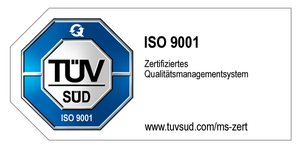Edge breaking
Edge breaking is an important machining step in metal-cutting manufacturing processes. An edge break avoids sharp edges and burrs by placing a slight bevel at the apex of their angle. In machining operations using rotary cutting tools, such as lathes or mills, an overhang usually forms on the free side over the course of the manufacturing process. This unplanned, irregular and often extremely sharp-edged form deviation is called burr. Burrs and flashes can not only pose a risk of injury, but also make assembly with other parts and smooth operation with other components more difficult. In addition, they can sometimes have an extremely negative impact on the material quality and longevity of workpieces. Edge breakage prevents these complications. Nevertheless, edge breakage is not necessary on every edge, and since it is a machining step that incurs costs, it makes sense to perform only necessary edge breakage. Accordingly, the edge condition of both outside and inside edges on workpieces is specified precisely in the engineering drawing. The drawing specifications for edge specifications in technical drawings are regulated by DIN ISO 13715.
We find the perfect solution for your project.
Contact us if you have questions to our services in the area of 3D metrology. We are looking forward supporting you in your success.



